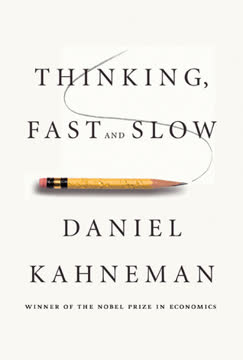Key Takeaways
1. Leaders create a Circle of Safety to foster trust and cooperation
When we feel that those inside our group, those inside the Circle, will look out for us, it creates an environment for the free exchange of information and effective communication.
Circle of Safety concept. Leaders who create a Circle of Safety within their organizations foster an environment where team members feel protected and supported. This psychological safety allows people to focus on external challenges rather than internal threats.
Trust and cooperation. Within this circle, trust flourishes, and people are more likely to share ideas, take risks, and collaborate effectively. This leads to increased innovation, problem-solving, and overall organizational success.
- Benefits of a strong Circle of Safety:
- Reduced stress and anxiety
- Increased willingness to share information
- Greater creativity and risk-taking
- Improved teamwork and collaboration
- Enhanced loyalty and commitment to the organization
2. Our biology drives our behavior in organizations
Whenever we see or experience acts of human generosity, it actually inspires us to want to do the same.
Biological incentives. Our bodies produce chemicals that influence our behavior and emotions in social settings. These chemicals evolved to help us survive and thrive in groups.
E.D.S.O. framework. Sinek introduces four key chemicals that drive human behavior:
- Endorphins: Mask physical pain and promote perseverance
- Dopamine: Motivate us to achieve goals and make progress
- Serotonin: Create feelings of pride and status
- Oxytocin: Foster trust, loyalty, and social bonding
Understanding these biological drivers can help leaders create environments that align with our natural inclinations, promoting cooperation, achievement, and well-being.
3. Empathy and human connection are essential for effective leadership
Leadership is about taking responsibility for lives and not numbers.
Empathy as a leadership tool. Effective leaders prioritize understanding and addressing the needs of their team members. This human-centered approach builds trust and loyalty.
Connection and performance. When leaders foster genuine connections with their teams, it creates a sense of belonging and purpose. This, in turn, drives better performance and dedication to the organization's goals.
- Ways leaders can demonstrate empathy:
- Active listening
- Showing genuine concern for team members' well-being
- Providing support during challenging times
- Recognizing and celebrating individual and team achievements
- Making decisions that consider the impact on people, not just profits
4. Modern work environments often disrupt our natural biological systems
We are social animals that are biologically more inspired and motivated when we know we are helping others.
Imbalance in modern workplaces. Many contemporary work environments prioritize short-term results and individual achievement over cooperation and long-term well-being. This disrupts our natural biological systems.
Consequences of disruption. When our biological needs for social connection and purpose are not met, it can lead to:
- Increased stress and anxiety
- Lower job satisfaction and engagement
- Reduced creativity and innovation
- Higher turnover rates
- Decreased overall well-being and mental health
Leaders must recognize these challenges and work to create environments that align with our biological needs for connection, purpose, and meaning.
5. Selfless leadership prioritizes people over short-term profits
The leaders of great organizations do not see people as a commodity to be managed to help grow the money. They see the money as the commodity to be managed to help grow their people.
Long-term success. Leaders who prioritize the well-being and growth of their people create organizations that are more resilient, innovative, and successful in the long run.
Contrasting approaches. Sinek contrasts leaders like Bob Chapman of Barry-Wehmiller and James Sinegal of Costco with those who prioritize short-term profits and shareholder value. The former create cultures of trust and loyalty, while the latter often lead to instability and ethical compromises.
- Benefits of people-first leadership:
- Higher employee engagement and retention
- Increased innovation and problem-solving
- Stronger customer relationships
- Greater resilience during economic downturns
- Sustainable long-term growth and profitability
6. Trust and integrity are fundamental to building strong organizations
Building trust requires nothing more than telling the truth.
Importance of integrity. Leaders who consistently demonstrate integrity build trust within their organizations. This trust is essential for creating a strong Circle of Safety and fostering cooperation.
Transparency and accountability. When leaders are honest about challenges, mistakes, and decisions, it creates an environment where team members feel safe to do the same. This openness leads to better problem-solving and innovation.
- Ways to build trust and integrity:
- Consistently follow through on commitments
- Admit mistakes and take responsibility
- Share information openly and transparently
- Make decisions based on ethical principles, not just profits
- Hold oneself and others accountable for actions and results
7. Shared struggle and purpose unite people and drive innovation
If the leaders of organizations give their people something to believe in, if they offer their people a challenge that outsizes their resources but not their intellect, the people will give everything they've got to solve the problem.
Power of shared challenges. When teams face meaningful challenges together, it creates strong bonds and drives innovation. This shared struggle aligns with our biological need for cooperation and purpose.
Inspiring vision. Leaders who articulate a compelling vision that goes beyond profit motivate their teams to achieve extraordinary results. This taps into our innate desire to be part of something larger than ourselves.
- Elements of an inspiring shared purpose:
- Addresses a meaningful problem or opportunity
- Challenges the team to stretch beyond their current capabilities
- Aligns with the organization's values and strengths
- Provides clear, measurable goals
- Offers opportunities for personal and professional growth
8. Technology and abstraction can erode human connections
We cannot "trust" rules or technology. We can rely on them, for sure, but trust them? No. Trust is a very special human experience.
Dangers of abstraction. As organizations grow and rely more on technology, there's a risk of losing the human connections that drive trust and cooperation. This abstraction can lead to unethical decision-making and a lack of empathy.
Balancing technology and humanity. While technology can enhance efficiency and communication, leaders must ensure it doesn't replace genuine human interactions and relationships.
- Ways to maintain human connections in a digital world:
- Prioritize face-to-face meetings when possible
- Use technology to enhance, not replace, personal interactions
- Create opportunities for informal social connections
- Encourage sharing of personal stories and experiences
- Regularly check in on team members' well-being and needs
9. Redefining challenges can inspire teams to innovate and excel
To really inspire us, we need a challenge that outsizes the resources available. We need a vision of the world that does not yet exist.
Framing challenges. Leaders can inspire their teams by presenting challenges that are ambitious yet achievable. This taps into our natural drive for progress and achievement.
Innovation through constraint. When teams are given limited resources to tackle significant challenges, it often leads to creative problem-solving and breakthrough innovations.
- Strategies for redefining challenges:
- Set ambitious, long-term goals that align with the organization's purpose
- Break big challenges into smaller, achievable milestones
- Encourage cross-functional collaboration to leverage diverse perspectives
- Provide autonomy in problem-solving approaches
- Celebrate progress and learning, not just final outcomes
10. True leadership is a commitment to serving others
Leadership is always a commitment to human beings.
Service-oriented leadership. Effective leaders prioritize the needs and growth of their team members over their own interests. This selfless approach builds trust, loyalty, and commitment.
Continuous commitment. Leadership is not a one-time event or a position to be achieved. It's an ongoing commitment to supporting and developing others.
- Characteristics of service-oriented leaders:
- Prioritize the growth and well-being of team members
- Lead by example, demonstrating the behaviors they expect from others
- Provide mentorship and support
- Take responsibility for failures and share credit for successes
- Make decisions that benefit the team and organization, not just themselves
True leadership requires courage, empathy, and a willingness to put the needs of others first. By creating environments that align with our biological needs for safety, connection, and purpose, leaders can inspire their teams to achieve extraordinary results while fostering personal and professional growth.
</most_relevant_traits>
Last updated:
FAQ
1. What is Leaders Eat Last by Simon Sinek about?
- Core premise: The book explores how great leaders create environments where people feel safe, valued, and motivated to cooperate, introducing the "Circle of Safety" as a central concept.
- Biological and anthropological roots: Sinek explains leadership through the lens of human biology and anthropology, showing how our brain chemistry and evolutionary history shape trust and teamwork.
- Focus on organizational culture: The book contrasts organizations that prioritize people with those that focus on numbers, illustrating the impact of leadership on culture and performance.
2. Why should I read Leaders Eat Last by Simon Sinek?
- Understand leadership’s true impact: The book reveals how leadership shapes organizational culture, employee well-being, and long-term success.
- Practical leadership insights: Readers gain actionable advice on building trust, fostering cooperation, and avoiding toxic, short-term thinking.
- Broader relevance: Sinek’s lessons apply beyond business, offering guidance for any group or community seeking to thrive through empathy and shared purpose.
3. What are the key takeaways from Leaders Eat Last by Simon Sinek?
- Leadership is service: Great leaders put the needs of their people first, creating environments where trust and cooperation flourish.
- Circle of Safety: Building a culture of safety and belonging is essential for innovation, loyalty, and high performance.
- Biology drives behavior: Understanding the role of neurochemicals helps leaders design environments that promote fulfillment and teamwork.
- Integrity and empathy matter: Sustainable success comes from leading with honesty, empathy, and a focus on people over numbers.
4. What does the title Leaders Eat Last mean according to Simon Sinek?
- Symbolic leadership sacrifice: The title refers to the Marine Corps tradition where leaders eat after their troops, symbolizing putting others’ needs first.
- Leadership as protection: True leaders prioritize the safety and well-being of their teams, earning trust and inspiring commitment.
- Evolutionary imperative: This principle is rooted in our need for safety and belonging, with leaders creating environments where groups can thrive.
5. What is the "Circle of Safety" in Leaders Eat Last and why is it important?
- Definition: The Circle of Safety is a leader-created environment where people feel protected from internal threats and can focus on shared goals.
- Biological foundation: When inside the Circle, trust and cooperation are promoted through the release of oxytocin and serotonin.
- Organizational impact: Companies with a strong Circle of Safety experience higher innovation, lower turnover, and better performance.
6. How does Simon Sinek explain the role of biology and neurochemicals in leadership and teamwork in Leaders Eat Last?
- Four key chemicals: Dopamine and endorphins drive individual achievement, while serotonin and oxytocin foster trust, pride, and social bonding.
- Balance is crucial: Overemphasis on dopamine (individual rewards) leads to selfishness and short-term thinking; balance with serotonin and oxytocin creates lasting fulfillment.
- Leadership influence: Leaders can shape environments that trigger these chemicals, inspiring loyalty, reducing stress, and enhancing cooperation.
7. What are some real-world examples Simon Sinek uses in Leaders Eat Last to illustrate his leadership principles?
- Military and corporate stories: Examples include Johnny Bravo’s selfless actions in Afghanistan and the U.S. Marines’ leadership traditions.
- Business transformations: Companies like Barry-Wehmiller, Next Jump, Costco, and 3M are highlighted for their people-first cultures and resulting success.
- Contrasts with toxic cultures: Sinek contrasts these with organizations like Goldman Sachs and GE, where prioritizing numbers over people led to negative outcomes.
8. How does Leaders Eat Last by Simon Sinek describe the impact of modern organizational structures on trust and cooperation?
- Abstraction and scale: Large organizations and virtual communication can create distance, making it harder to build trust and see people as individuals.
- Dunbar’s Number: Sinek references the idea that humans can maintain about 150 close relationships; beyond this, trust declines unless strong leadership is present.
- Face-to-face matters: The book emphasizes that real, in-person relationships are essential for deep trust and belonging, which virtual tools cannot fully replace.
9. What is "Destructive Abundance" in Leaders Eat Last and why is it dangerous?
- Definition: Destructive Abundance occurs when surplus resources lead to selfishness and a focus on protecting results over people.
- Cultural consequences: This imbalance fosters greed, infighting, and loss of trust, weakening organizations from within.
- Leadership responsibility: Leaders must actively manage culture to prevent destructive abundance by extending the Circle of Safety and balancing incentives.
10. What role does integrity play in leadership according to Leaders Eat Last by Simon Sinek?
- Foundation of trust: Integrity—aligning words and actions with moral values—is essential for building trust and loyalty.
- Honesty about mistakes: Leaders who admit errors promptly strengthen their credibility and relationships.
- Corporate examples: Sinek contrasts companies that practice transparency with those that spin or deny, showing how integrity shapes reputation and culture.
11. What practical advice does Simon Sinek offer for leaders to build trust and strong cultures in Leaders Eat Last?
- Create a Circle of Safety: Protect people from internal threats and foster a sense of belonging.
- Lead with empathy: Treat employees as people, not just resources, to build loyalty and motivation.
- Empower and develop leaders: Trust mid-level managers to extend the culture and maintain safety at scale.
- Balance incentives: Design environments that reward both individual achievement and social connection for sustainable success.
12. How can leaders apply the lessons from Leaders Eat Last by Simon Sinek to achieve lasting organizational success?
- Build trust through service: Leadership is a commitment to serving others, not just holding authority.
- Practice patience: Trust and strong cultures develop over time through consistent, small actions.
- Lead by example: Demonstrate integrity, admit mistakes, and share knowledge openly to inspire cooperation.
- Focus on shared purpose: Motivate teams with a vision bigger than profit, encouraging innovation and long-term commitment.
Review Summary
Leaders Eat Last / Find Your Why / Start With Why receives high praise with an overall rating of 4.23/5 stars. Readers appreciate its insights on leadership, particularly the concept of the "circle of safety" and balancing EDOS. The book is lauded for confirming readers' beliefs and providing practical ideas for true leadership. Some find it repetitive, but many consider it a favorite and recommend it for entrepreneurs. Readers value its teachings on employee care, relationship building, and addressing challenges, suggesting multiple readings to fully grasp and implement its concepts.
Similar Books








Download PDF
Download EPUB
.epub digital book format is ideal for reading ebooks on phones, tablets, and e-readers.




